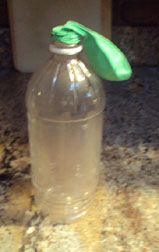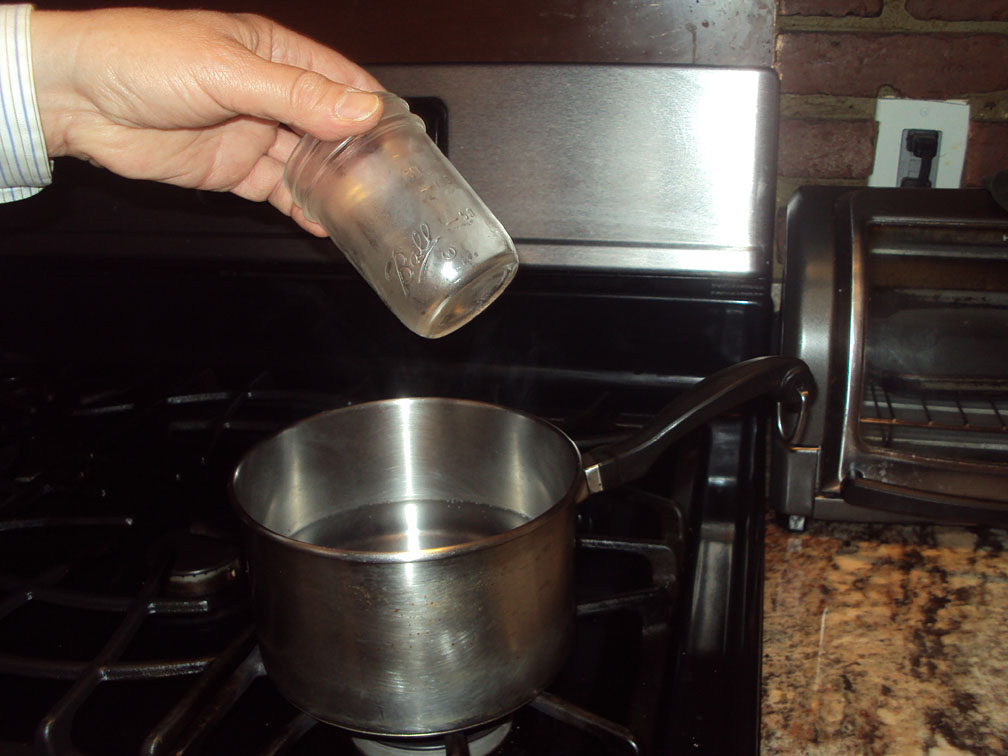Climate Change: Winners and Losers
Lesson 4: Desert Belts
Page 1 Page 2: Moving Air Page 3 Review
Moving Air:
Let's do a couple of experiments. In the first, place a balloon over the mouth of a water bottle.

In a saucepan, heat some water on the stove until it is just about boiling. In another pan or bowl, add some water and ice. Start by placing the bottle with the balloon in the hot water. What happens to the balloon?

The balloon stands up. The air inside the bottle is expanding because it is warming up.
Now place the bottle in the cold water. What happens?

The balloon collapses. The air contracts as it cools.
In the top photo the volume of air increased as the air warmed up. In the second photo the volume decreased when it cooled. But even though the volume changed, the amount of air was the same in both photos--no air entered or escaped from the bottle. So the amount of air did not change, but the density changed as the air heated or cooled. This illustrates a very important point about the air in our atmosphere: warmer air is less dense than cooler air. Warmer air tends to rise up into the atmosphere; cooler air tends to sink back down to Earth.
There is one more important point that we need to consider. Look at the glass jar sitting on the stove next to the saucepan in the photo below:

The air surrounding the jar is at room temperature. Notice that the jar is completely dry.
But watch what happens to the jar when, after turning off the flame below the saucepan, I hold the jar above the saucepan:

The water in the saucepan is still very hot, but it is not boiling, and there is no visible steam. Yet the outside of the jar becomes covered with moisture. Why is this?
The air above the saucepan has heated up. This warm air is less dense than the room-temperature surrounding it, so it rises. As it rises, it carries moisture from the pan up with it. The jar, however, is still at room temperature, so when the rising, moist air hits the jar, it cools off. As the air cools, it loses its ability hold moisture, and so the moisture in the air condenses into tiny water droplets that collect on the surface of the jar. This illustrates a second key point about the air in our atmosphere: warmer air can hold more moisture than cooler air.
Now that we know these two important principles about moving air, let's go back and look at the desert belts.
Go to Page 3